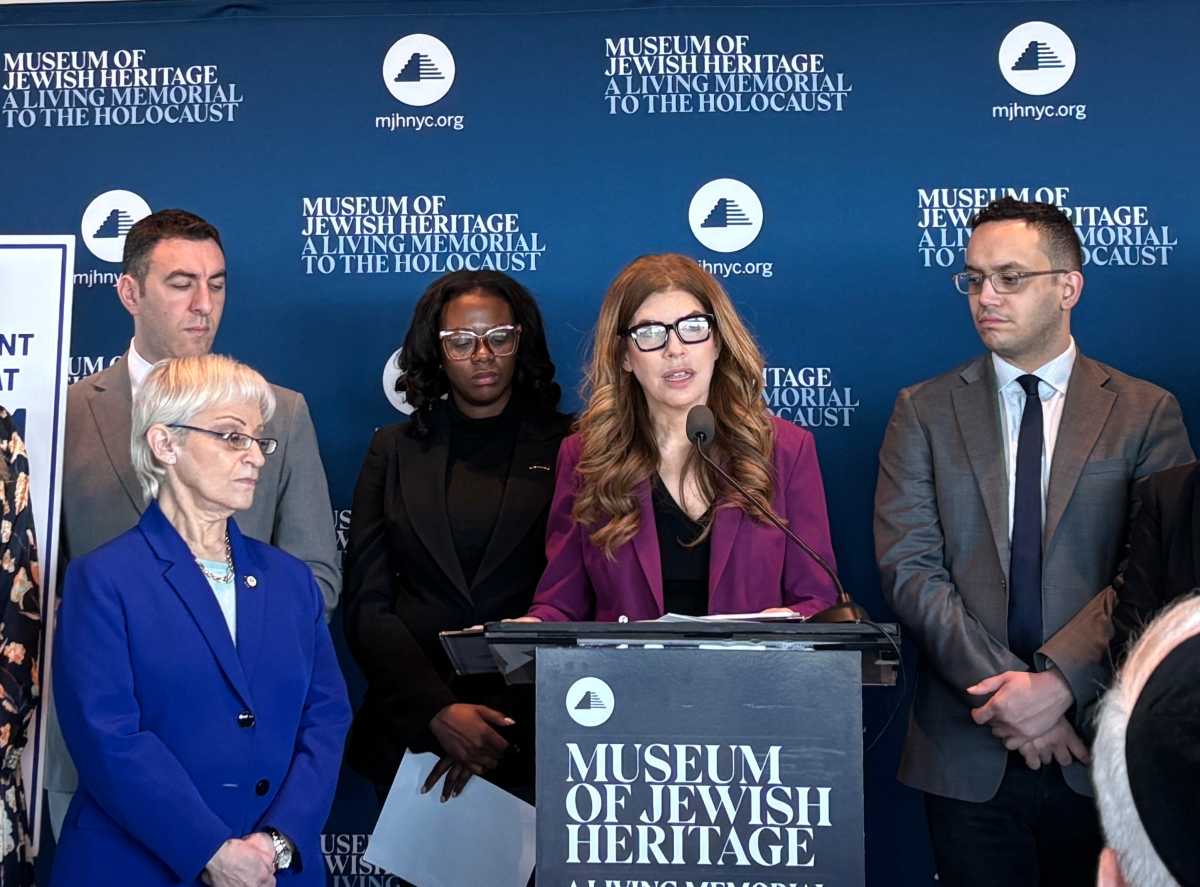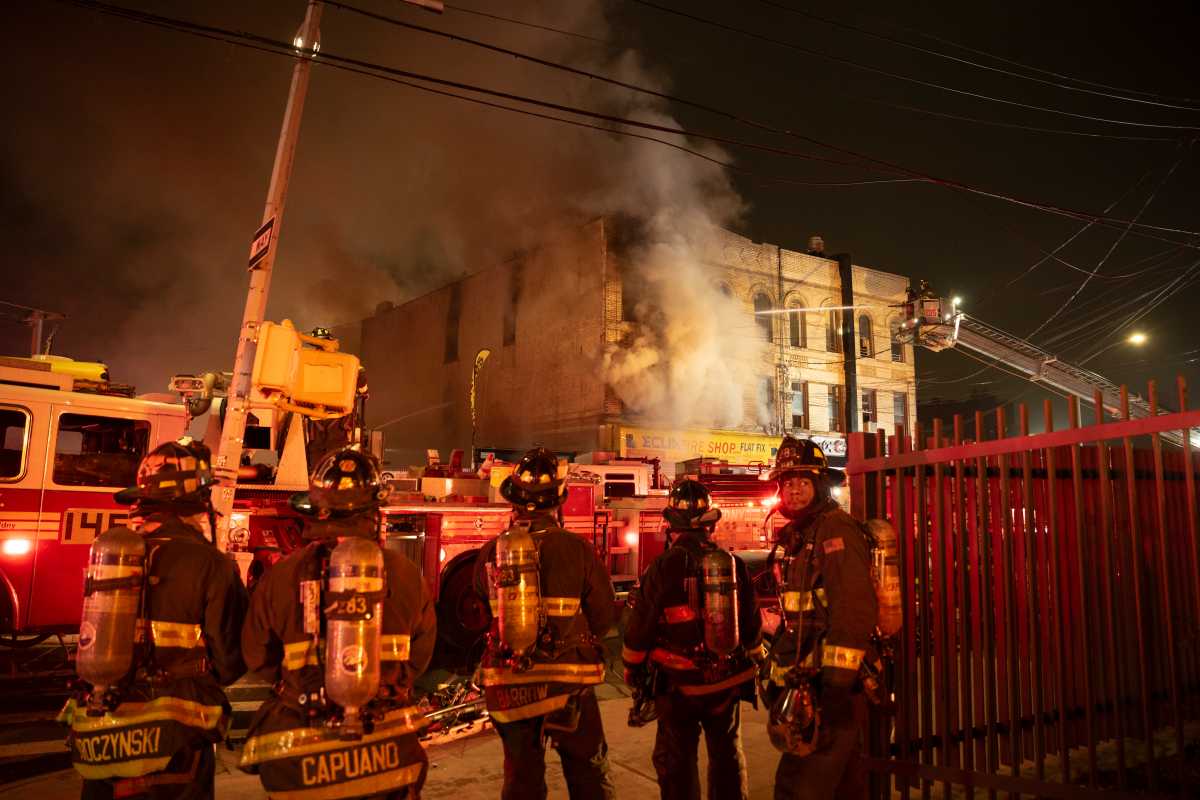Drivers on local bridges will be seeing some new fine-feathered friends.
A total of five peregrine falcon chicks were born at the Verrazano-Narrows, Throgs Neck and Marine Parkway-Gil Hodges Memorial Bridges.
Although no longer on the federal list of endangered species, peregrine falcons are still on the state endangered species list.
The chicks had their first close-ups taken when they were banded by a state volunteer wildlife expert this week. The process includes putting a metal band around their feet with numbers to identify them and track them as they grow and reproduce. The Verrazano-Narrows falcons included two girls and a boy, while the Throgs Neck and Marine Parkway-Gil Hodges each had a boy. The Throgs Neck chick is the oldest of the group at four weeks. The other four hatched during the first week in May and are now three weeks old.
“The falcons have been on this bridge longer than I have and I’ve been here 28 years,” said Maintenance Superintendent William McCann, who is the keeper of the nest at the Verrazano.
The falcons’ original box nest was underneath the lower level roadway until 2000, when a paint project was started and containment shrouds were put up.
“We didn’t want the falcons to leave altogether so we built one box atop the Brooklyn tower and another atop the Brooklyn pedestal and gave them a choice,” McCann said.
They chose the tower with its sweeping view of New York Bay from 693-feet above the water, and have returned each mating season.
The same is true at the Throgs Neck Bridge, where the peregrine nesting box was moved from the 360-foot Queens tower to the matching Bronx tower during a 2007 painting project.
“We have a good relationship with the falcons because we’re like absentee landlords,” said Throgs Neck Maintenance Superintendent Ray Higgins. “We set them up with a nice place to live and then try not to bother them.”
But the falcon couple at Marine Parkway has the most historical digs by far. The nesting box, which is located 215-feet above the water on the Rockaway side of the bridge, is inside an old gun turret that was installed during World War II.
“Next year they’ll get an upgrade because the wood inside the original box is badly split and it is dangerous for the chicks,” said Rockaway Maintenance Superintendent Carlton Cyrus.
City falcons typically like to nest atop bridges, church steeples and high-rise buildings because these spots provide an excellent vantage point for hunting prey, including pigeons and small birds, officials say. In 2008, the State Department of Conservation documented 67 pairs of peregrine falcons living in New York City































